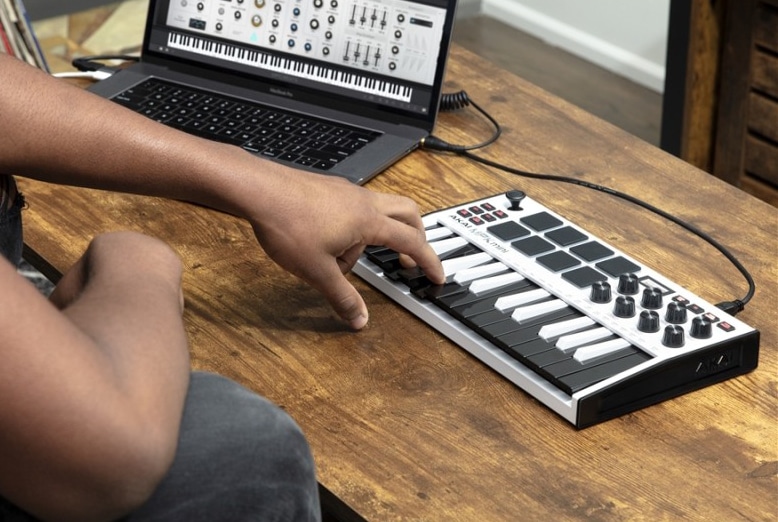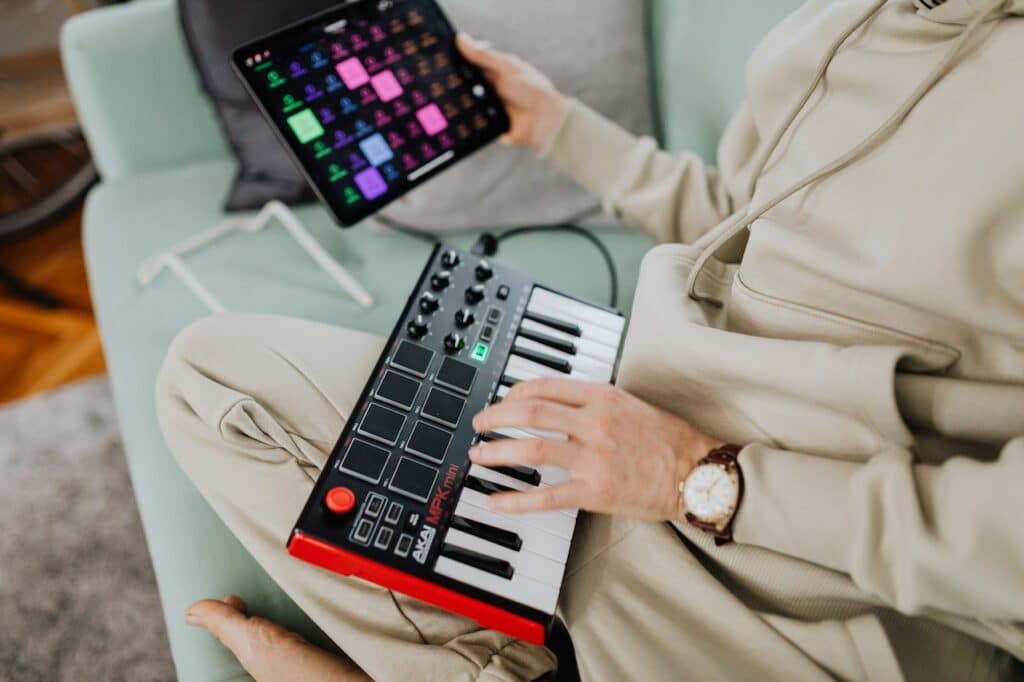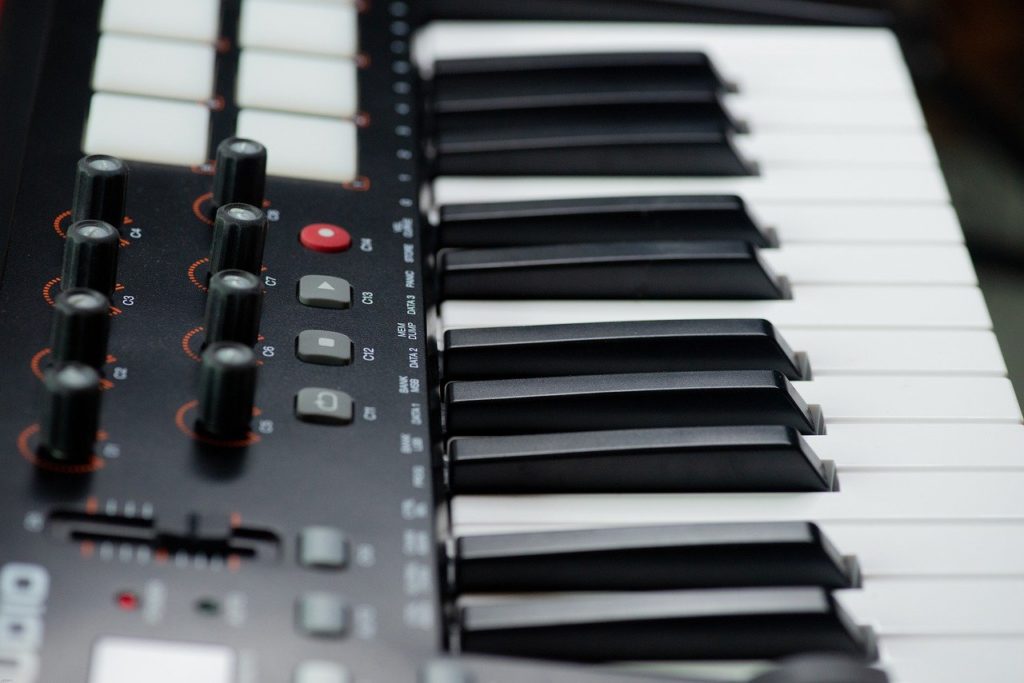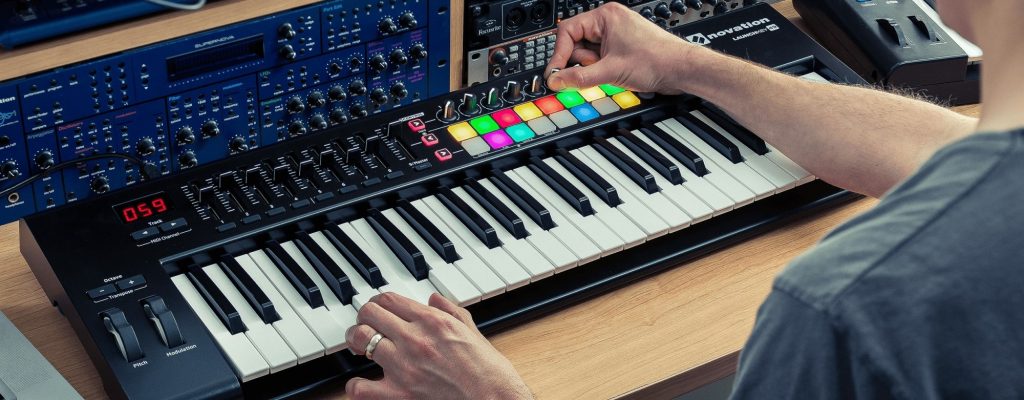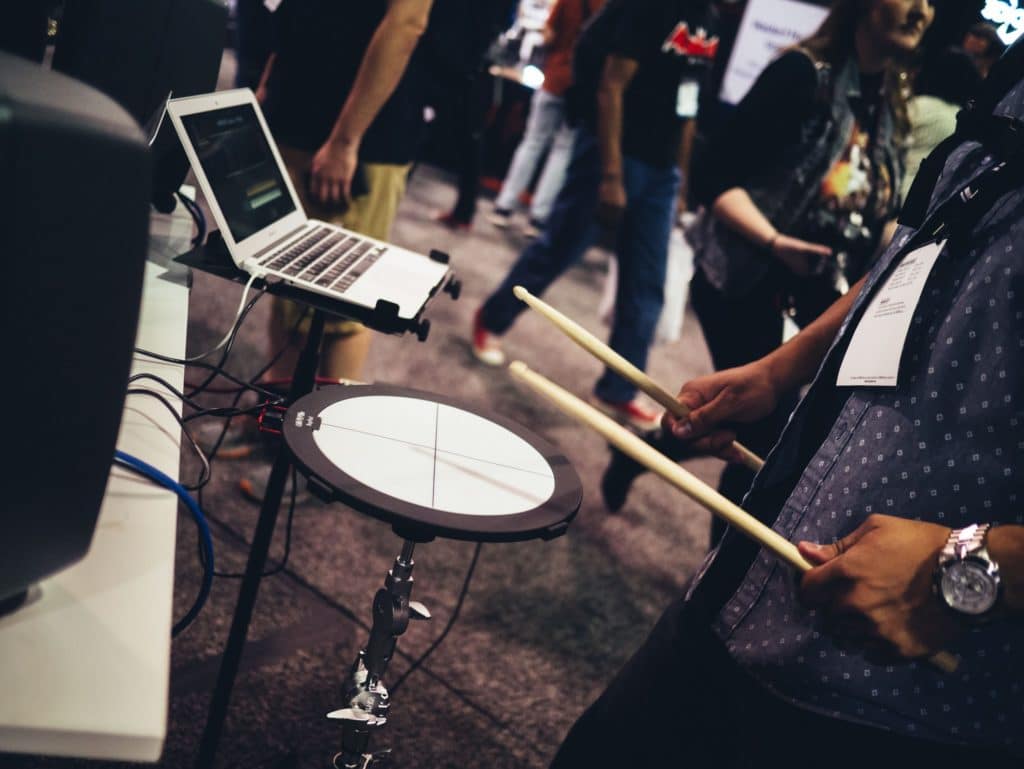What can be considered a travel MIDI keyboard controller?
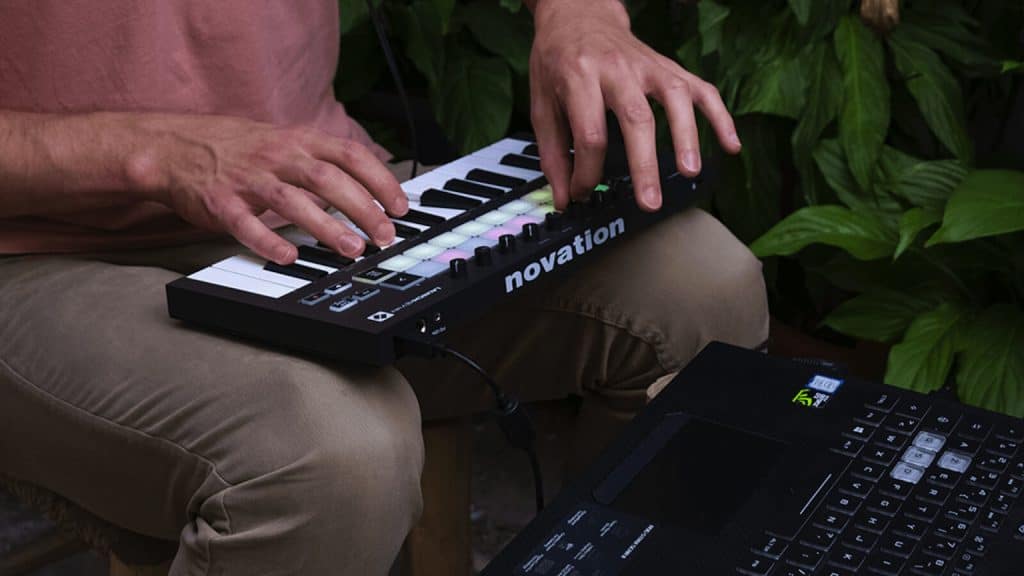 MIDI keyboards come in all sizes but anything ideal for travel should be adequately compact and portable. A good one falls in the range of 15 to 20 inches in length, with small allowances south and north of these figures. Some models such as the Novation Launchkey Mini MK3 are decently sized to fit into a standard laptop bag alongside your laptop itself. In terms of weight, travel MIDI keyboards fall under 4 pounds and you can even ultra-light machines like the M-Audio Keystation Mini 32 MK3 at just 1 pound.
MIDI keyboards come in all sizes but anything ideal for travel should be adequately compact and portable. A good one falls in the range of 15 to 20 inches in length, with small allowances south and north of these figures. Some models such as the Novation Launchkey Mini MK3 are decently sized to fit into a standard laptop bag alongside your laptop itself. In terms of weight, travel MIDI keyboards fall under 4 pounds and you can even ultra-light machines like the M-Audio Keystation Mini 32 MK3 at just 1 pound.
Now, MIDI keyboards should not be confused with piano keyboards. The latter actually produce sounds whereas the former is used for recording purposes. MIDI keyboards form part of the setup used in a typical music studio to produce music. Apart from keys, they constitute other buttons, wheels, and sliders for sending MIDI signals or commands over a MIDI 5-pin cable of USB to other musical instruments or computers connected and functioning on the same MIDI protocol.
Features to consider when choosing a MIDI keyboard
Choosing the best MIDI controller can be confusing, especially if you are a novice in music production. Below are the key aspects to consider when shopping for a good one.
Number and size of keys
The best portable MIDI keyboards have 25 keys, but you can find 32, 49, 61, and 88-key units. For the purpose of this post, however, we only covered 25 and 32-key MIDI controllers as these are the most portable. The number of keys determines how many octaves you can play with your controller. For instance, 25 keys spans over two octaves. These, however, are only good for playing short basslines and cannot play bass and treble lines at the same time.
Think about the size of the keys too. Weighted action MIDI keyboards nearly always have full-size keys similar to a piano. Semi-weighted keys come in various sizes from mini to full-size. The choice here depends on the skills of the user, space limitations, portability, and probably even the hand size of the player.
Action
This refers to how the keys respond to your touch. There are three types of action:
- Weighted hammer action – these closely imitate the feel of a traditional piano. This type is less common with MIDI keyboards and those that have it tend to be quite expensive.
- Semi-weighted – they use a lightweight attached to the end of each key. This setup is ideal for most players because it allows traditional jamming as well as MIDI note entering. Many mid and high-end units provide this type of action.
- Synth-action – these are spring-loaded but without integrated weight. As a result, they are easy to press down and they produce a swift response. Their lack of resistance, however, makes them poor for jamming.
Aftertouch
Aftertouch is a brilliant way to add expressiveness to your playing because this feature sends extra messages to your DAW. It can help in emphasizing melodies and chords, but it’s something you don’t find in each MIDI controller out there. Aftertouch encompasses the volume swells, pitch bends, vibrato, and more. It comes to attention when punctured for an extended time period.
Inputs and Outputs
Almost every MIDI keyboard uses a USB output to transmit MIDI data, but other higher-end units include an array of outputs for versatility. One such output is the 5-pin MIDI DIN, which allows for connection to external synthesizers and music devices. This can be a really useful feature if you want the ability to play and modulate external devices.
MIDI controllers are also equipped with jacks for sustain or expression pedals. The former is perfect for achieving that realistic piano-style playing while the latter is idea for controlling and moderating variables of your choice. Both can enhance your playing.
Pads
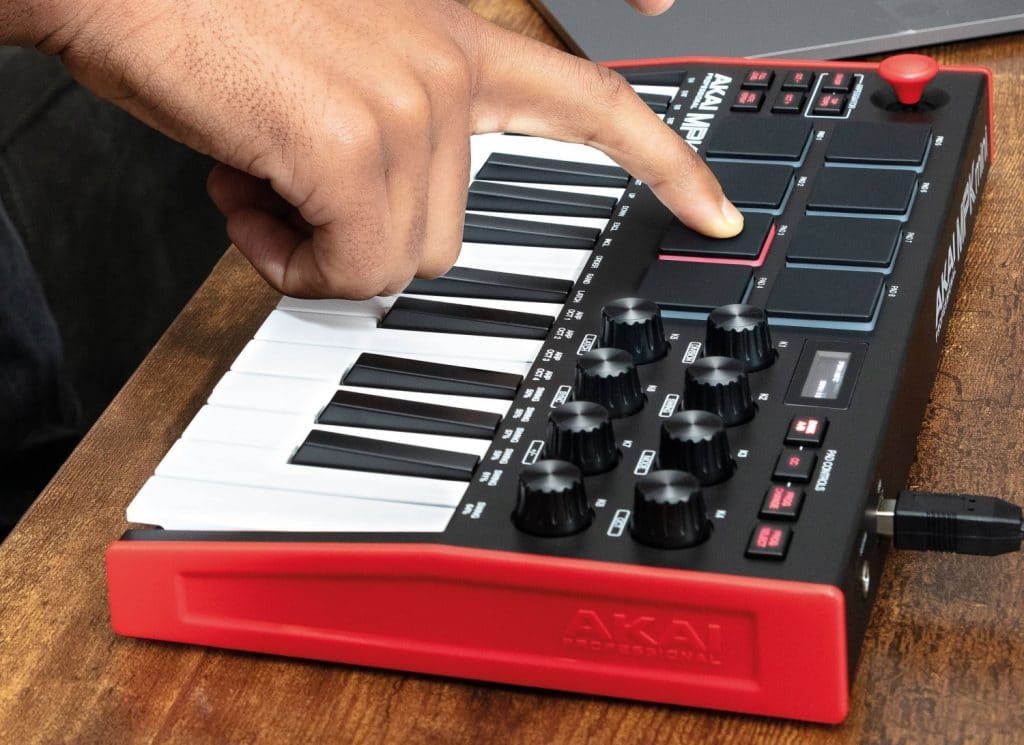 Pads come in sets of 8 or more, are made of rubber, sensitive to velocity, and can bring realism and changes of patches to your beats. If you’re majorly into producing trap, hip-hop, electronic or such music that needs setting down a programmed beat, drum pads can bring so much creativity to your production.
Pads come in sets of 8 or more, are made of rubber, sensitive to velocity, and can bring realism and changes of patches to your beats. If you’re majorly into producing trap, hip-hop, electronic or such music that needs setting down a programmed beat, drum pads can bring so much creativity to your production.
Buttons, faders and knobs
Buttons could typically be assigned for accessing the menus, settings, octave up/down, MIDI information, transport, and transpose functions. Faders are basically for equalizer control and organ modulation. Knobs are also assignable to almost any function, ascribed majorly for endless encoding.
Power supply
The best small MIDI keyboard is either bus-powered or battery-operated. The first one allows you to power the device from your laptop or PC via USB connection; no external power source required or long cables to carry around. However, larger MIDI keyboards may use an external power source – an AC adaptor.
Software included
Most MIDI keyboards will work straight out of the box with popular DAWs such as Ableton. From our list, these include the likes of Akai Professional APC Key 25, Alesis V25, and Novation Launchkey Mini MK3, which come with Ableton Live feature. Still, DAWs are made different so if you’re using particular software, it would be in your best interest to get a unit geared towards that software.
Some other software include FL Studio, GarageBand/Logic Pro X, and Cubase. The Launchkey Mini MK3 works with most of these.
What’s the best MIDI keyboard for my DAW?
It depends on the software you are accustomed to. Simply look at one that allows integration with your DAW and go with it, keeping in mind other factors mentioned above.






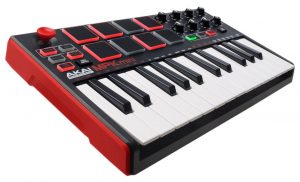
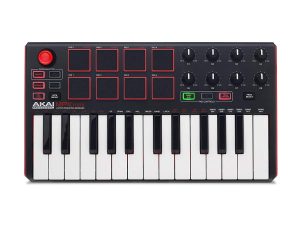
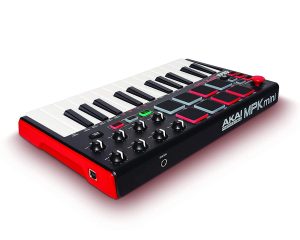
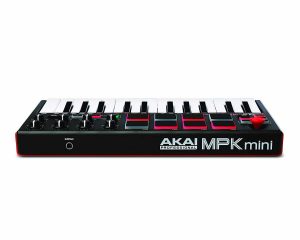
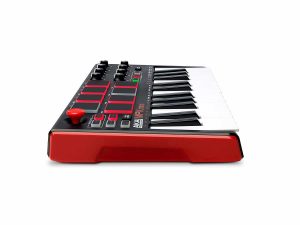
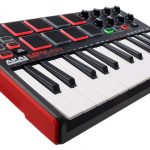

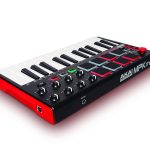
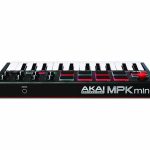
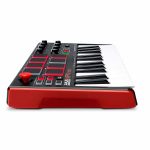
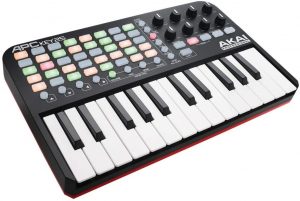

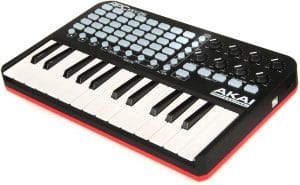
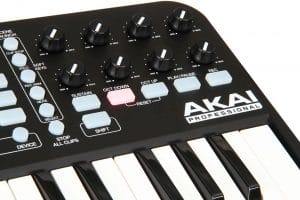

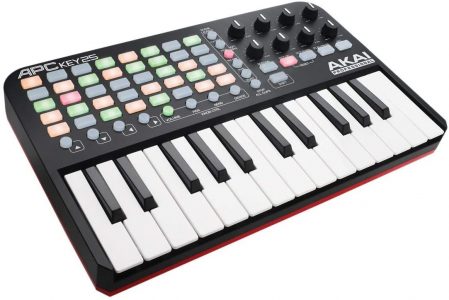
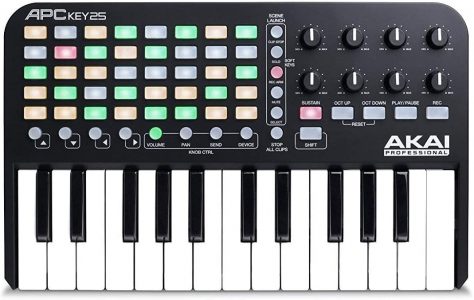
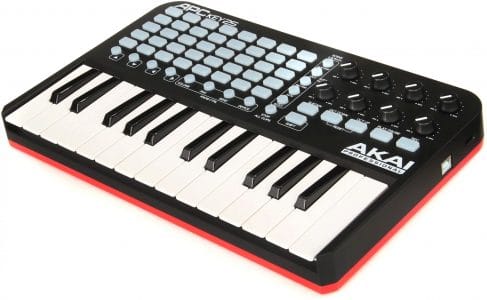
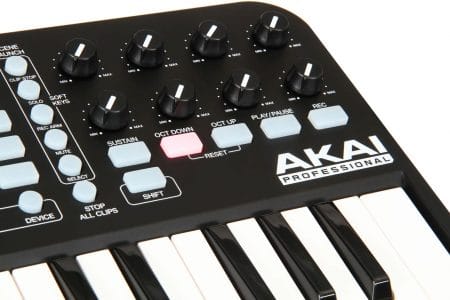

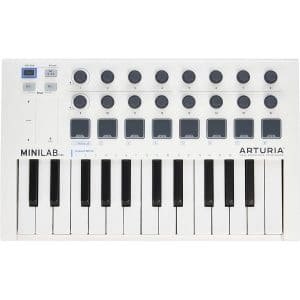
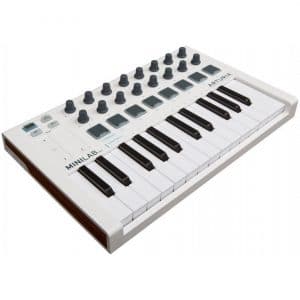
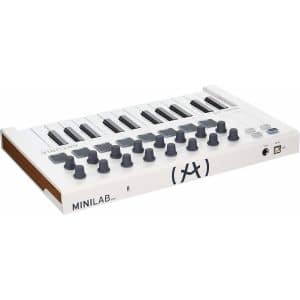
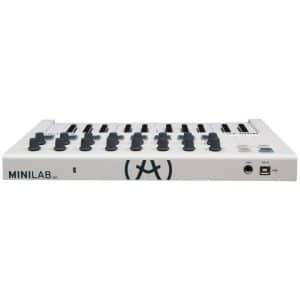
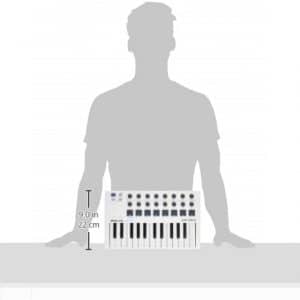
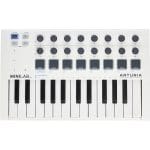
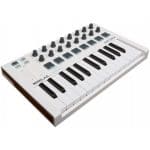
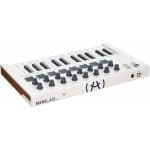
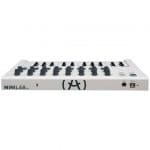
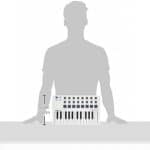
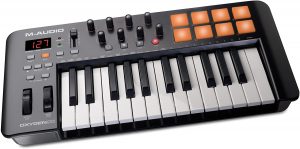


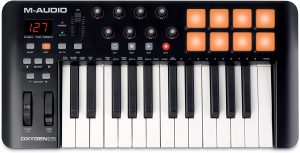
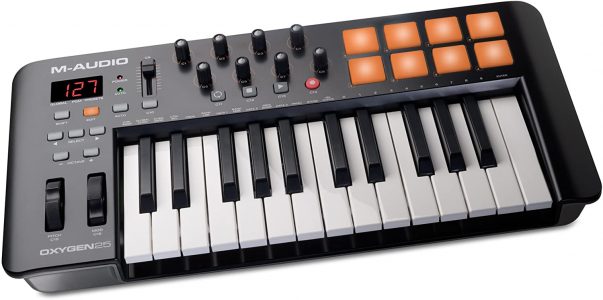

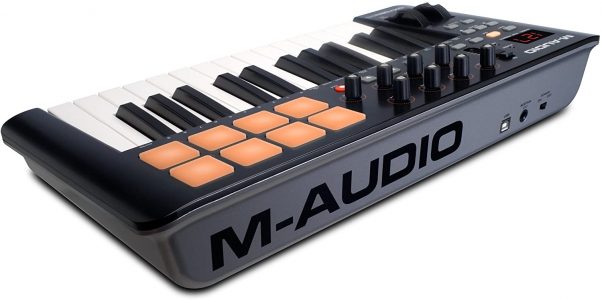
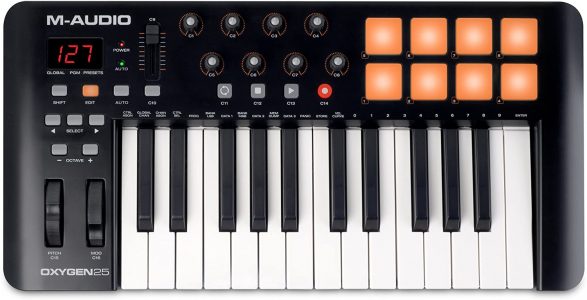
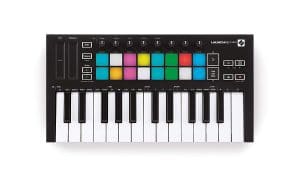
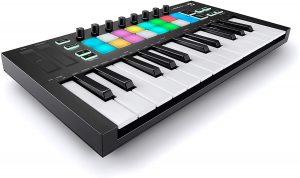


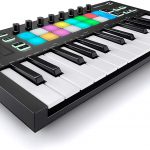
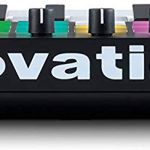
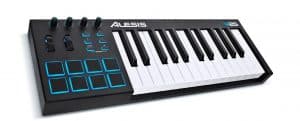

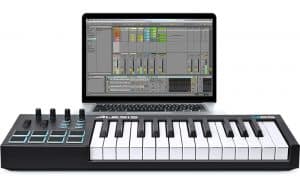

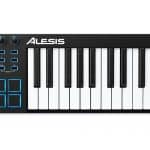
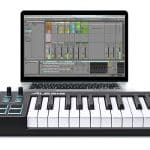
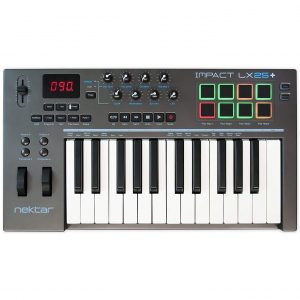
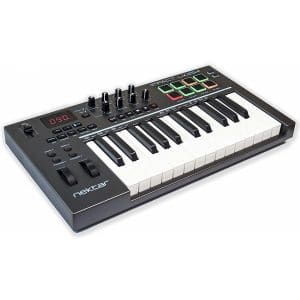
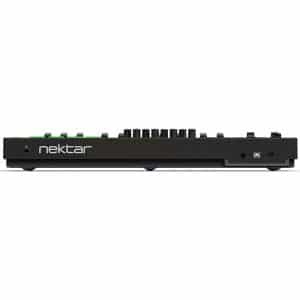
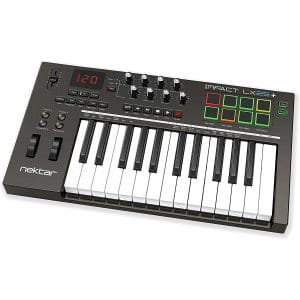

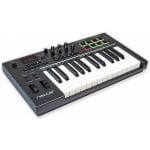
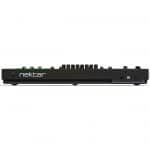
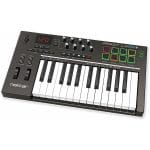
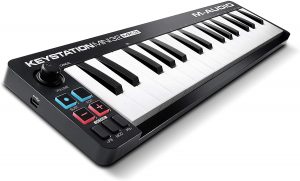

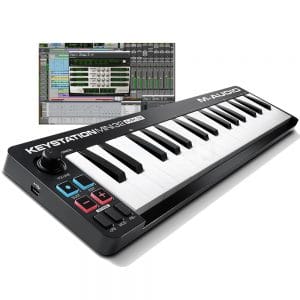
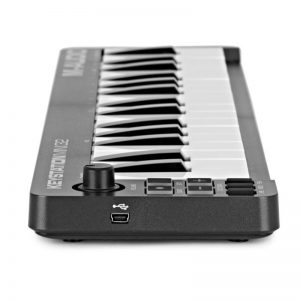
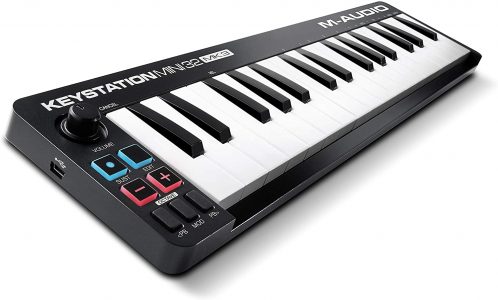

 MIDI keyboards come in all sizes but anything ideal for travel should be adequately compact and portable. A good one falls in the range of 15 to 20 inches in length, with small allowances south and north of these figures. Some models such as the
MIDI keyboards come in all sizes but anything ideal for travel should be adequately compact and portable. A good one falls in the range of 15 to 20 inches in length, with small allowances south and north of these figures. Some models such as the  Pads come in sets of 8 or more, are made of rubber, sensitive to velocity, and can bring realism and changes of patches to your beats. If you’re majorly into producing trap, hip-hop, electronic or such music that needs setting down a programmed beat, drum pads can bring so much creativity to your production.
Pads come in sets of 8 or more, are made of rubber, sensitive to velocity, and can bring realism and changes of patches to your beats. If you’re majorly into producing trap, hip-hop, electronic or such music that needs setting down a programmed beat, drum pads can bring so much creativity to your production.




